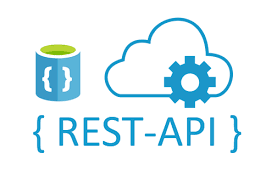REST APIs (Representational State Transfer Application Programming Interfaces) have become the standard method for enabling communication between clients and servers in web applications. Whether you’re building mobile apps, web apps, or even IoT devices, mastering REST APIs is essential for modern development.
What is a REST API?
A REST API is a set of rules and conventions for building and interacting with web services. It allows different software systems to communicate over HTTP by using standard methods like GET, POST, PUT, DELETE, and PATCH. RESTful APIs treat server resources as objects that can be created, read, updated, or deleted.
Key Principles of REST
- Stateless: Each request from client to server must contain all the information needed to understand and process it.
- Client-Server Architecture: Separation of concerns between user interface (client) and data storage (server).
- Cacheable: Responses must define themselves as cacheable or not to improve performance.
- Uniform Interface: Standardized way of communicating, including using resource URIs and HTTP methods.
- Layered System: Client cannot ordinarily tell whether it is connected directly to the end server or an intermediary.
Building a REST API: Best Practices
- Use Meaningful URIs: Keep endpoints simple and intuitive, e.g.,
/users,/products/123. - Use HTTP Methods Properly: GET for reading data, POST for creating, PUT/PATCH for updating, DELETE for removing.
- Status Codes Matter: Use proper HTTP status codes (200 OK, 201 Created, 400 Bad Request, 404 Not Found, 500 Internal Server Error).
- Version Your API: To maintain backward compatibility, e.g.,
/api/v1/users. - Secure Your API: Use HTTPS, authentication tokens like JWT, and rate limiting.
- Documentation: Provide clear, up-to-date API docs using tools like Swagger or Postman.
Why REST API is Still Relevant?
Despite the rise of alternatives like GraphQL, REST APIs remain widely used because of their simplicity, scalability, and compatibility with HTTP standards. They’re easy to cache, test, and integrate with almost any frontend or backend technology.
Tools and Frameworks to Build REST APIs
- Express.js (Node.js): Lightweight, flexible web framework.
- Spring Boot (Java): Powerful for enterprise-grade APIs.
- Django REST Framework (Python): Simplifies REST API creation.
- Flask (Python): Minimal and easy to extend.
- Laravel (PHP): Full-featured web framework with API support.
Final Thoughts
Mastering REST APIs empowers you to build scalable and maintainable backend services that can serve diverse client applications. By following REST principles and best practices, your APIs will be efficient, secure, and easy to use—critical for any modern web or mobile app project.
